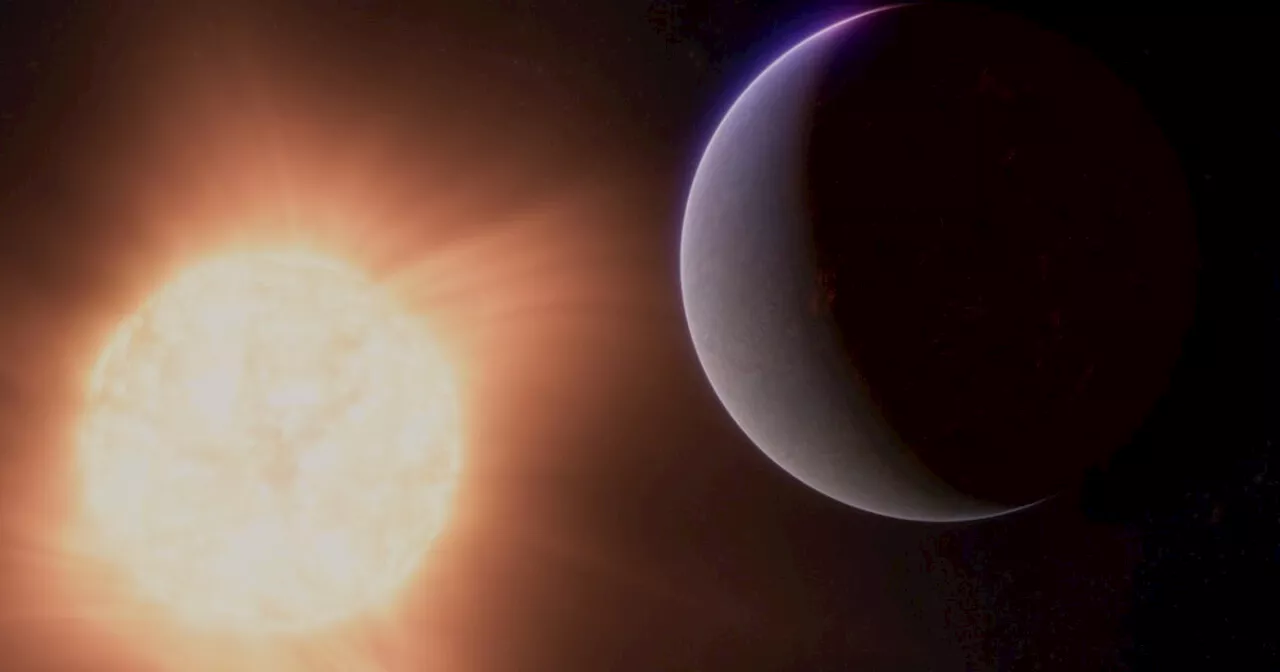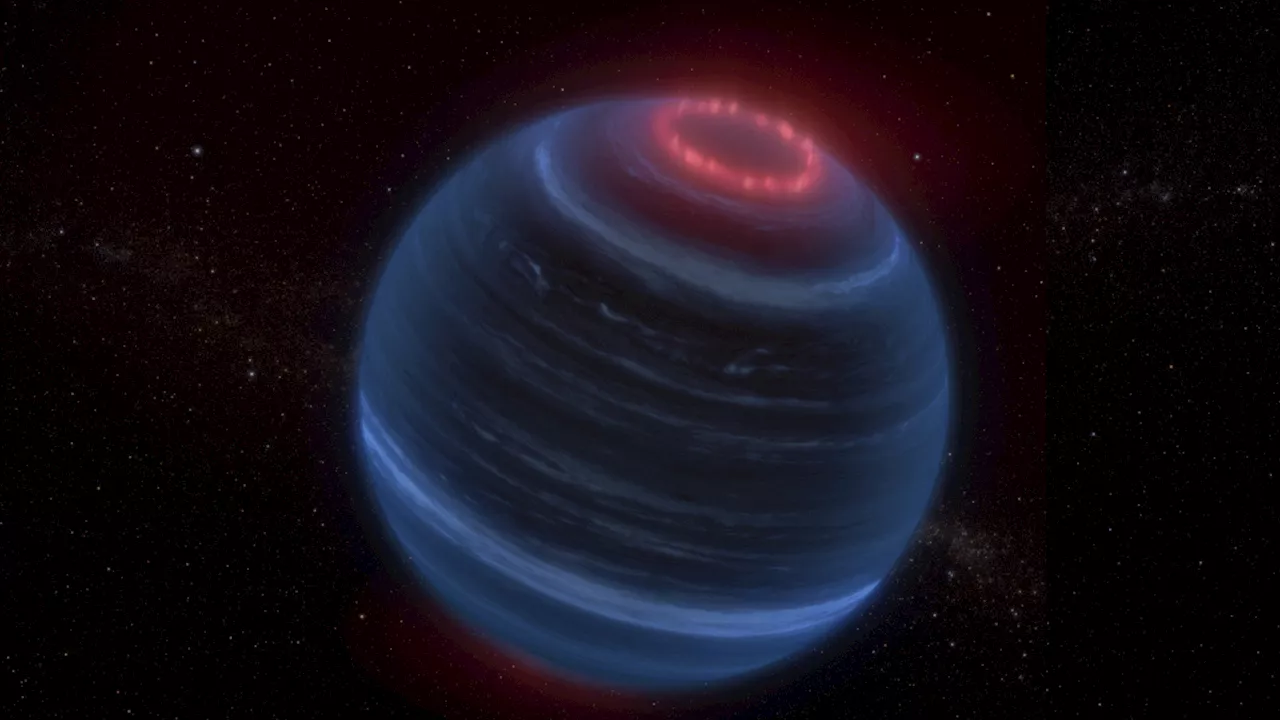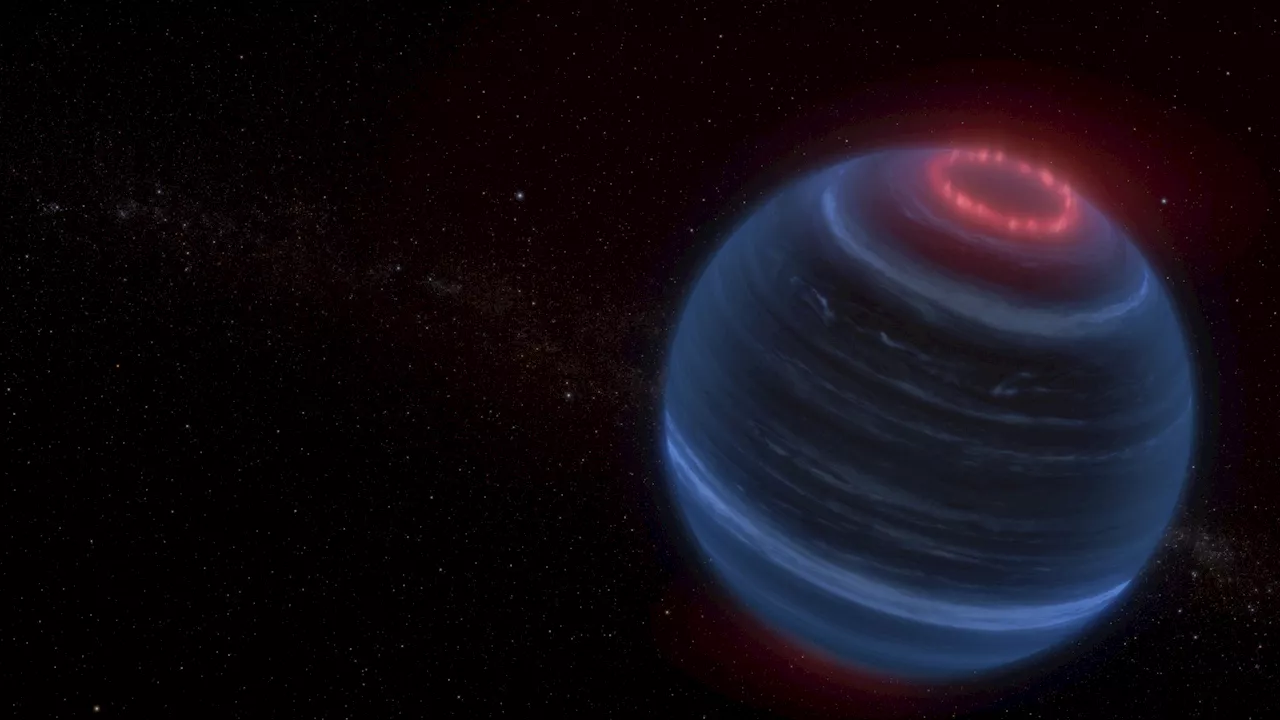Joanna Thompson is a science journalist and runner based in New York. She holds a B.S. in Zoology and a B.A. in Creative Writing from North Carolina State University, as well as a Master's in Science Journalism from NYU's Science, Health and Environmental Reporting Program.
Can a"Hell Planet" have an atmosphere? In a new paper published May 8 in the journal Nature, researchers using the James Webb Space Telescope may have finally cracked this decades-old exoplanetary mystery — and, in doing so, detected the best evidence of an atmosphere around a rocky world outside our solar system.
Ever since 55 Cancri e was discovered in 2004, scientists have been puzzling over various aspects of its existence: its orbital period, its density, and most of all, its atmosphere. Initially, researchers weren't sure whether the exoplanet could even support an atmosphere; some believed it was simply too hot and too close to its star. But new evidence from JWST suggests that 55 Cancri e is indeed blanketed with a layer of gas — albeit an unusual one.
"Instead, the MIRI data showed a relatively low temperature of about 2,800 degrees Fahrenheit ," lead study author Renyu Hu, an astronomer at NASA's Jet Propulsion Laboratory, said in a statement. This reading indicates that something — likely an atmospheric current — was moving heat from the day side to the night side of the planet.Next, Hu's team used the near-infrared camera instrument to determine what elements might be present in this suspected atmosphere.
By submitting your information you agree to the Terms & Conditions and Privacy Policy and are aged 16 or over.related stories—James Webb telescope finds origins of the biggest explosion since the Big Bang — revealing a new cosmological mystery—James Webb telescope discovers oldest black hole in the universe
South Africa Latest News, South Africa Headlines
Similar News:You can also read news stories similar to this one that we have collected from other news sources.
 James Webb telescope peers at the atmosphere of a rocky hell worldThe James Webb Space Telescope recently investigated an exoplanet that could have the first atmosphere of a rocky planet discovered outside the solar system.
James Webb telescope peers at the atmosphere of a rocky hell worldThe James Webb Space Telescope recently investigated an exoplanet that could have the first atmosphere of a rocky planet discovered outside the solar system.
Read more »
 If Newsom truly follows the science, why not adopt the ‘science of reading’ in California schools?When it comes to the 'science of reading' in schools, California has continued to oppose a proven method for improving comprehension.
If Newsom truly follows the science, why not adopt the ‘science of reading’ in California schools?When it comes to the 'science of reading' in schools, California has continued to oppose a proven method for improving comprehension.
Read more »
 If Newsom truly follows the science, why not adopt the ‘science of reading’ in California schools?He said he wants the Legislature to “study this problem closely.”
If Newsom truly follows the science, why not adopt the ‘science of reading’ in California schools?He said he wants the Legislature to “study this problem closely.”
Read more »
 James Webb Space Telescope's 'shocking' discovery may hint at hidden exomoon around 'failed star'Robert Lea is a science journalist in the U.K. whose articles have been published in Physics World, New Scientist, Astronomy Magazine, All About Space, Newsweek and ZME Science. He also writes about science communication for Elsevier and the European Journal of Physics. Rob holds a bachelor of science degree in physics and astronomy from the U.K.
James Webb Space Telescope's 'shocking' discovery may hint at hidden exomoon around 'failed star'Robert Lea is a science journalist in the U.K. whose articles have been published in Physics World, New Scientist, Astronomy Magazine, All About Space, Newsweek and ZME Science. He also writes about science communication for Elsevier and the European Journal of Physics. Rob holds a bachelor of science degree in physics and astronomy from the U.K.
Read more »
 James Webb Space Telescope data pinpoint possible aurorae on a cold brown dwarfUsing new observations from the James Webb Space Telescope (JWST), astronomers have discovered methane emission on a brown dwarf, an unexpected finding for such a cold and isolated world.
James Webb Space Telescope data pinpoint possible aurorae on a cold brown dwarfUsing new observations from the James Webb Space Telescope (JWST), astronomers have discovered methane emission on a brown dwarf, an unexpected finding for such a cold and isolated world.
Read more »
